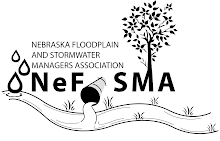New Datasets that are Part of FEMA's RiskMAP Program, Andy Megrail and Rodney Odom, FEMA Region VII
This session will introduce attendees to new products and datasets that are part of FEMA’s Risk MAP program. The products covered in this session include non-regulatory products such as the Flood Risk Report, Flood Risk Map, Flood Risk Database, and Discovery Report. The datasets that comprise these products include: Changes Since Last FIRM, Flood Depth & Analysis Grids, Flood Risk Assessment Data, and Areas of Mitigation Interest.
The presenters will show the current products and facilitate a Question & Answer session about the products.
After hearing this presentation the audience will have a better understanding of the tools being developed to realize the risk of the floodplain areas. The tools will identify risk both in the form of dollars and in the form of not only the regulatory 1% level but also for targeting potential mitigation through lower and higher events being identified.


No comments:
Post a Comment